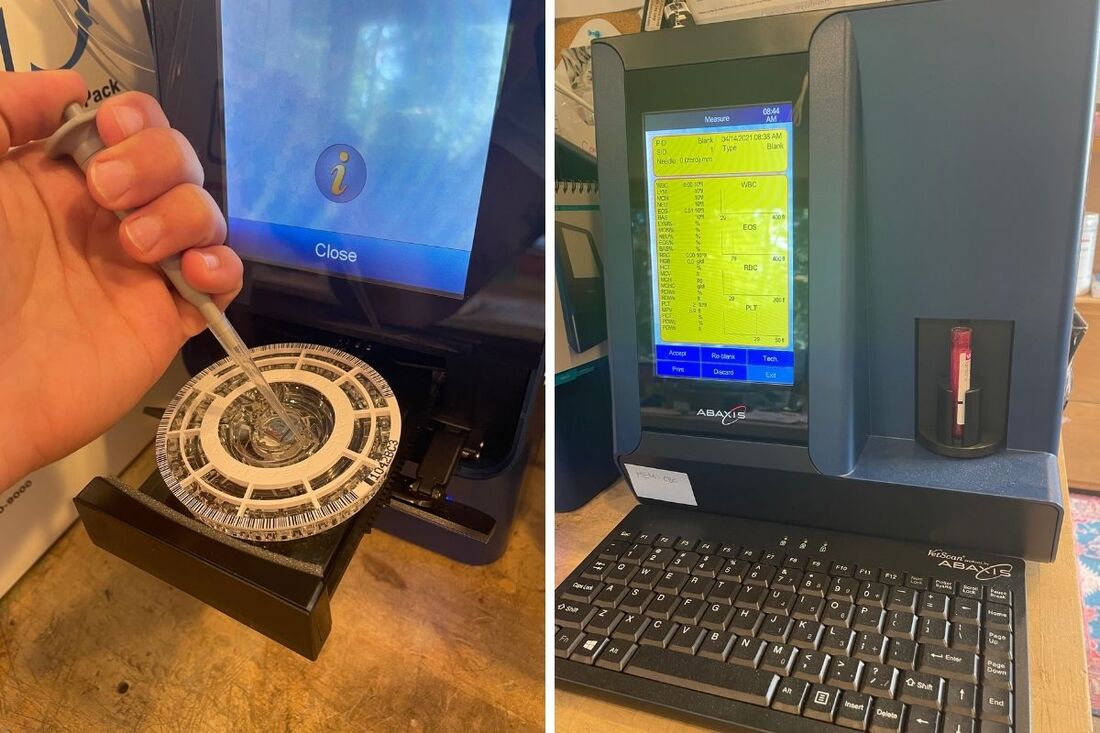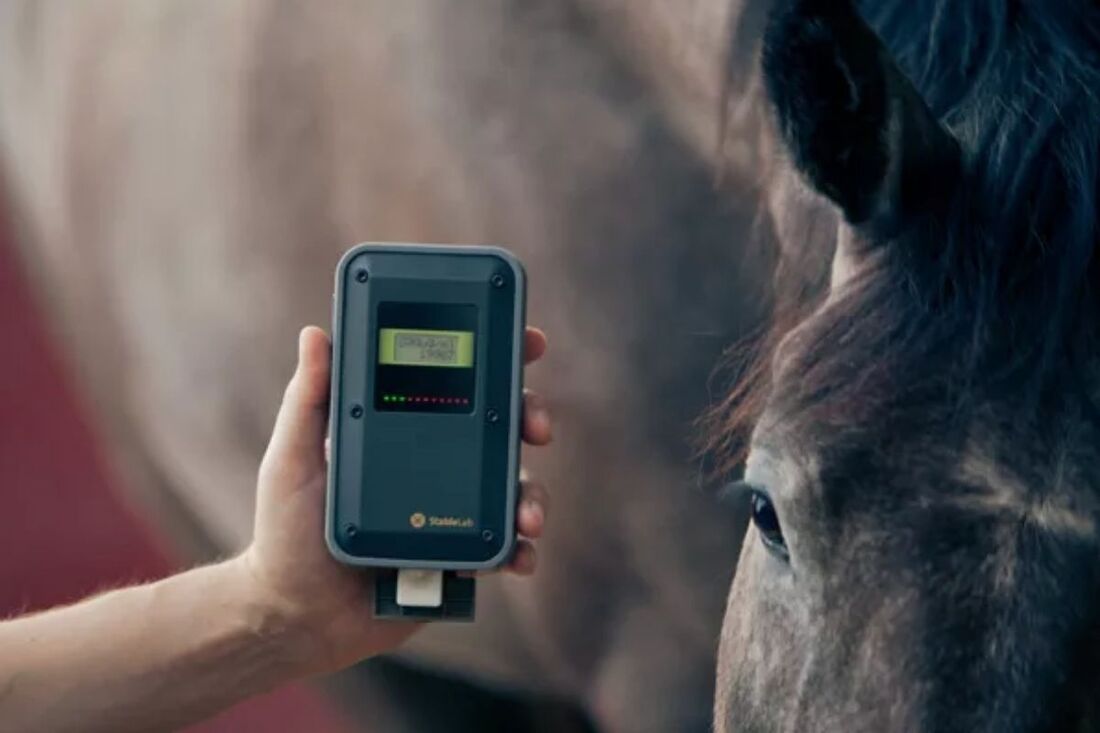|
You may have heard about Equine Cushing’s Disease (more specifically, Pituitary Pars Intermedia Dysfunction, PPID) or Equine Metabolic Syndrome (EMS), but what are they exactly, and how will they affect your horse if diagnosed? The following is an introduction to these two conditions. Equine Cushing’s DiseasePPID is the most common endocrine disorder in equines. It most often affects older horses but has been observed in some younger than ten years of age. In cases of PPID, the hypothalamus and pituitary gland fail to communicate appropriately. This failure of typical communication results in the pituitary gland becoming hyperactive, producing various hormones circulating through the body abnormally. The pituitary hormone routinely measured for diagnosis of PPID is adrenocorticotropic hormone (ACTH). Depending on the time of year, sometimes ACTH levels are measured after a small dose of thyrotropin-releasing hormone (TRH) that will stimulate the abnormal pituitary cells to secrete more ACTH. TRH Stimulation tests are useful in diagnosing the disease in the early stages. Elevated levels of various hormones in a PPID horse can cause many changes, some visible, some not, and can vary in severity in each horse. Some of these changes include: - Poor performance or lethargy - Changes in coat: long or wavy hair, failure to shed hair fully each spring - Hoof inflammation (laminitis), sometimes with associated hoof abscesses - Propensity to infections or delayed healing - Loss of muscle mass typically noticed over the back and hindquarters, as well as a “pot-bellied” appearance - Excess or inappropriate sweating - Increased water intake and urination - Infertility or abnormal heat cycles in mares While PPID is not curable, both medical and daily management changes can reduce the condition’s signs and symptoms. The most appropriate medication is pergolide, a dopamine receptor agonist. It helps decrease some of the hormone production by the pituitary gland. Other essential components of PPID management are the maintenance of excellent husbandry and general health care. Close attention to nutrition, vaccination, deworming, medical treatment, and horses’ hoof care is recommended. Equine Metabolic Syndrome (EMS)EMS is characterized by insulin dysregulation and resistance. Causes of EMS onset include genetics, diet, environment, and, sometimes, coexisting PPID. Breed predispositions to EMS include many pony and mini breeds, Saddlebreds, Morgans, and Paso finos. Horses may be an “easy keeper,” not seemingly requiring as much feed as their friends. Diet can also play a role, including a high-sugar-content diet or suddenly increased access to lush, fresh grass. Clinically, these horses may appear overweight and most commonly show “regional adiposity,” Fat deposition occurs at the neck, shoulder, and above the tail head. Because of the increased circulating insulin levels, EMS horses are also at increased risk for foot soreness and laminitis, which can be extremely painful and devastating to the horse if not addressed. Testing involves a thorough physical exam and blood tests to ascertain insulin levels and glucose, leptin, and thyroid levels. Starwood submits its bloodwork for PPID and EMS to Cornell, leading researchers in the field who have developed a comprehensive panel to diagnose both conditions. The mainstay of treatment for EMS is nutritional management and weight loss. If diagnosed, your veterinarian may recommend transitioning hay and grain sources to brands with lower starch content. Sometimes, your veterinarian may also recommend medications to accelerate weight loss and sensitize the body to insulin again. Exercise is also essential to promote weight loss as long as the horse remains comfortable on its feet. If your horse is also diagnosed with PPID, treatment with pergolide may improve the signs of EMS. Early recognition of these conditions and regular veterinary care is critical for a good quality of life. If you wish for further information about either of these conditions or are interested in getting your horse tested, please contact Starwood Equine.
2 Comments
There will come a time in your horse’s life where their career path will change from equine athlete to retired equine partner. Our goal is to discuss steps you can take to offer a smooth transition. After all, the effort they have put into their jobs for us warrants a well-deserved retirement plan! While going about your daily barn chores, it is vital to create a routine for you and your horse to establish his or her “normal.” This routine can be as simple as giving them a thorough daily groom to check for any lumps, bumps, cuts, or scrapes and note any body condition score or coat color changes. Setting a baseline allows you to recognize any deviations in behavior or wellbeing more easily. An examination is critical in the later stages of their life when identifying subtle changes can help address health concerns early. Just like people, horses’ organ and immune system function change with age. The Starwood veterinary team recommends collecting annual blood work to assess current health and act as a baseline for future reference and comparison. Starwood Equine now offers in-house lab work, providing its veterinarians and clients with rapid results to plan treatment more effectively. This bloodwork provides valuable insights into your horse’s health. A complete blood count (CBC) looks for any signs of anemia or systemic inflammation, while the blood chemistry looks at muscle and organ system function. Assessing organ function can help monitor response to long-term medication use - that many geriatric horses receive. Adding regular testing to your older horse’s annual examination is not only an easy way to assess your horse’s overall health but also will display any early signs of potentially serious diseases. Typically, routine bloodwork includes CBC and chemistry. However, Starwood also has a stall-side SAA that measures systemic inflammation within minutes on the farm. Based on your horse’s presentation, we may also recommend screening for endocrine conditions, including pituitary pars intermedia dysfunction (PPID or Cushing’s disease) and Equine Metabolic Syndrome (EMS). Although EMS and PPID can occur at any age, PPID is most commonly found in horses over the age of 12, and EMS is often detected in horses between the ages of 10-20. These endocrine changes can affect many aspects of your horse’s wellbeing, including their performance and energy, the propensity to infections or hoof inflammation (laminitis), muscle mass, hair coat, and fat distribution. Early detection through bloodwork helps to manage the signs of PPID and EMS before they become serious.
Stay tuned for an upcoming Blog Post on EMS and PPID! In all, this bloodwork helps to monitor current and future conditions that may not be visible to us externally. Regular evaluation can increase the chances of extending the comfort and life of your beloved senior companion. Call Starwood to schedule this routine screening or ask us to include it in our next vaccine visit! |
Topics
All
Archives
May 2021
|
Privacy Policy | Copyright © 2019 Starwood Equine Veterinary Services, Inc. All rights reserved.





 RSS Feed
RSS Feed